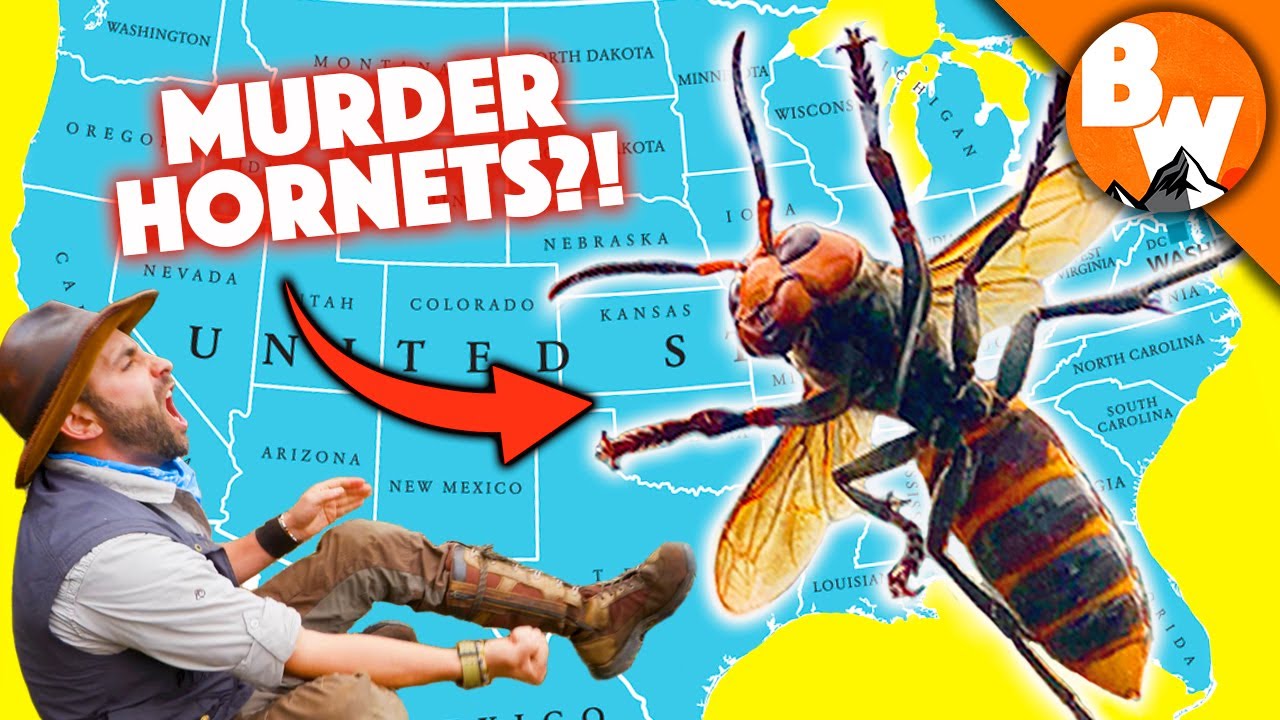Introduction: Murder Hornets in Rhode Island
Rhode Island, known for its beautiful landscapes and diverse wildlife, has recently raised concerns about the existence of murder hornets within its borders. These giant hornets, scientifically known as Vespa mandarinia, have gained notoriety due to their aggressive nature and potential threat to local ecosystems. In this article, we will explore whether murder hornets can be found in Rhode Island and shed light on the implications they may have on the environment and human safety.
What are Murder Hornets? An Overview
Murder hornets, native to East Asia, are the largest species of hornets in the world, measuring up to two inches in length. Their distinct orange and black coloration, along with their menacing stinger, make them easily recognizable. These hornets are known for their aggressive behavior and powerful venom, capable of causing severe pain and, in some cases, even death. They primarily feed on insects, including honeybees, making them a significant threat to local bee populations.
Global Distribution of Murder Hornets
Originally, murder hornets were confined to regions in East Asia, including Japan, China, and Korea. However, recently, there have been reports of murder hornets appearing in other parts of the world. In 2019, they were discovered in British Columbia, Canada, raising concerns about their potential spread across North America. While their presence in Canada has been confirmed, their distribution in the United States, particularly in Rhode Island, remains uncertain.
Can Murder Hornets Be Found in Rhode Island?
As of now, there have been no confirmed sightings of murder hornets in Rhode Island. While their presence cannot be entirely ruled out, there is currently no substantial evidence to suggest that they have established themselves within the state’s borders. However, it is vital to remain vigilant and take necessary precautions to prevent their potential invasion.
Factors Affecting Murder Hornets’ Presence
Several factors contribute to the potential presence of murder hornets in a particular area. Climate, availability of suitable habitats, and the presence of preferred prey, such as honeybees, play crucial roles. Rhode Island’s climate, characterized by cold winters and moderate summers, may be a deterrent to the establishment and survival of murder hornet colonies. However, further research is required to fully understand the factors influencing their presence in the state.
The Impact of Murder Hornets on Local Ecosystems
If murder hornets were to establish themselves in Rhode Island, they could have a significant impact on the local ecosystem. Their voracious appetite for insects, particularly honeybees, threatens pollination, which is essential for maintaining biodiversity and agricultural productivity. The loss of pollinators can disrupt the delicate balance within ecosystems, leading to potential declines in plant populations and subsequent effects on other animals that rely on those plants for food and habitat.
Concerns and Risks Associated with Murder Hornets
The potential risks associated with murder hornets extend beyond ecological concerns. Their highly aggressive nature and potent venom make them a danger to humans, especially those allergic to stings. A single sting from a murder hornet can cause excruciating pain, tissue necrosis, and potentially life-threatening anaphylactic reactions. The potential impact on public safety, along with the adverse effects on local fauna, makes it crucial to monitor and address the potential threat of murder hornets in Rhode Island.
Identifying Murder Hornets in Rhode Island
Proper identification is vital when distinguishing murder hornets from other native species. Their large size, orange and black coloration, and distinctive head shape are key identifying features. It is essential to familiarize oneself with their characteristics to differentiate them from other hornet species commonly found in Rhode Island, such as the bald-faced hornet or yellow jacket.
Reporting Suspected Sightings of Murder Hornets
If anyone suspects they have encountered a murder hornet in Rhode Island, it is crucial to report the sighting immediately. Citizen science initiatives and local authorities play a crucial role in monitoring and responding to potential threats. Reporting sightings promptly can aid in tracking the potential spread of murder hornets and implementing appropriate mitigation strategies.
Rhode Island’s Response to Murder Hornet Threats
Rhode Island, in collaboration with local agencies, has been proactive in addressing potential murder hornet threats. Efforts include public awareness campaigns, dissemination of educational materials, and coordination with beekeepers and researchers to detect any signs of their presence. These measures aim to create a comprehensive response plan to tackle the potential invasion of murder hornets effectively.
Mitigation Strategies for Dealing with Murder Hornets
To mitigate the threat of murder hornets, several strategies can be employed. These include enhanced surveillance and monitoring programs, establishment of quarantine measures, development of honeybee management practices, and research into effective control methods. Collaboration between government entities, researchers, and the public is essential to implement these strategies successfully.
Conclusion: Monitoring and Awareness Efforts Needed
While there have been no confirmed sightings of murder hornets in Rhode Island, continued monitoring and awareness efforts are crucial. Understanding the potential risks associated with these invasive species and taking appropriate actions can help protect both the environment and public safety. By staying informed and reporting any suspected sightings, Rhode Islanders can actively contribute to preventing the establishment of murder hornets in their state and safeguarding their local ecosystems.





